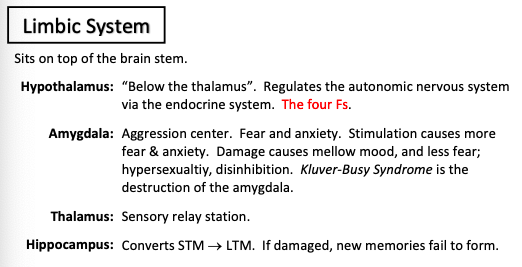10/26/24: Twins
1/26
There's no tags or description
Looks like no tags are added yet.
Name | Mastery | Learn | Test | Matching | Spaced |
|---|
No study sessions yet.
27 Terms
Monozygotic twins
Identical genotypes
Dizygotic twins
share about 50% of their genotypes.
The biospychosocial model
Predicts that human diseases are caused by a complex combination of genetics or biological traits + psychological factors + environmental influences.
Diagnostic and statistical Manual of mental illness
Psychological disorders are both diagnosable and treatable.
The order of Maslow’s hierarchy of needs
Need to feel safe
need to feel love
need to achieve
need to self-actualize
Self-serving bias
when people attribute their own success to intrinsic qualities (motivation to succeed), while attributing failures to external causes.
Ex: accept good result as they pay great effort, and bad results as the impact of outside factors’ faults.
The fundamental attribution error
is a tendency to underestimate the situation and overestimate one’s personality, character, or abilities.
Ex: he acts that way because he is mean
Optimism bias
a belief that bad things only happen to other people
Just world phenomenon
when people believe the world is fair place and people get what they deserve.
Homeostasis
Is a state that human body thought to be in balance, according to drive reduction theory.
NOT a theory for motivation.
Incentive theory
HUman need some external stimuli as a motivator (encourage or discourage) for behavior.,
Instinct
certain behaviors are unconscious and inherent in particular species. And motivate behavior without conscious input.
Adolescent development
The brain (especially the prefrontal cortex, which is responsible for abstract thought and anticipating consequences) is still developing throughout the teenage years.
It is a time of confusion over identity roles.
The limbic system is developing more rapidly than the prefrontal cortex.
Limbic system
Hypothalamus: regulate autonomic nervous system via endocrine system.
Amygdala: fear and anxiety.
Thalamus: sensory relay station
Hippocampus: convert short to long-term memory. If damage, no new memory formed.

Erickson’ model of psychological development
Eight stages
Trust vs. mistrust
autonomy vs. shame and doubt
initiative vs. guilt
industry vs. inferiority
identity vs. role confusion
intimacy vs. isolation
generatively vs. stagnation
integrity vs. despair
infancy —> 18months
Trust vs. mistrust
preschool 3yo → 5yo
initiative vs. guilt
toddler 18months → 3yo
autonomy vs. shame and doubt
middle school: 5 → 11yo
industry vs. inferiority
teen years: 12yo → 18yo
identity vs. role confusion
young adults: 18 → 40yo
intimacy vs. isolation
middle age 40yo → 65yo
generativity vs. stagnation
older adulthood: 65yo → death
integrity vs. despair
role exit
happens in the case of disengagement from a role that is important to a person’s sense of self.
Ex: once delivery the baby, the woman exits her role as "pregnant woman”
Role strain
happens in the case of a single status that has conflicting expectations associated with it.
Ex: a mother struggles between the expectation to show compassion to her children while also being expected to discipline them for poor behaviors.
Role tension
includes three types: role conflict, role exit, role strain.r
Role conflict
People have multiple statuses in society.
These statuses conflict based on the expectations present in their communities/society.